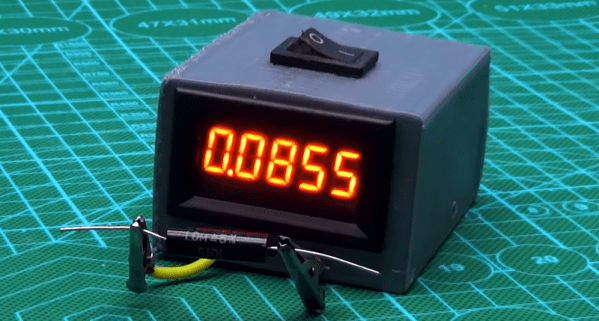We like to pretend that wires are perfect all the time. For the most part that’s acceptable, but sometimes you really do care about those tiny fractional ohm quantities. Unfortunately though, most meters won’t read very low values. There are tricks you can use to achieve that aim, such as measuring low currents through a device with a known voltage applied. It is handier though to have an instrument to make the reading directly, and [Kasyan TV] did just that with a surprisingly low part count.
The whole thing is built from an LM317, a resistor, and a voltmeter module, that’s it. [Kasyan] mentions the meter’s accuracy means the lower digits are not meaningful, but it looks to us as though there are other sources of error — for example, there’s no way to zero out the probe’s resistance except during the initial calibration. Continue reading “Your Own Milliohm Meter”













